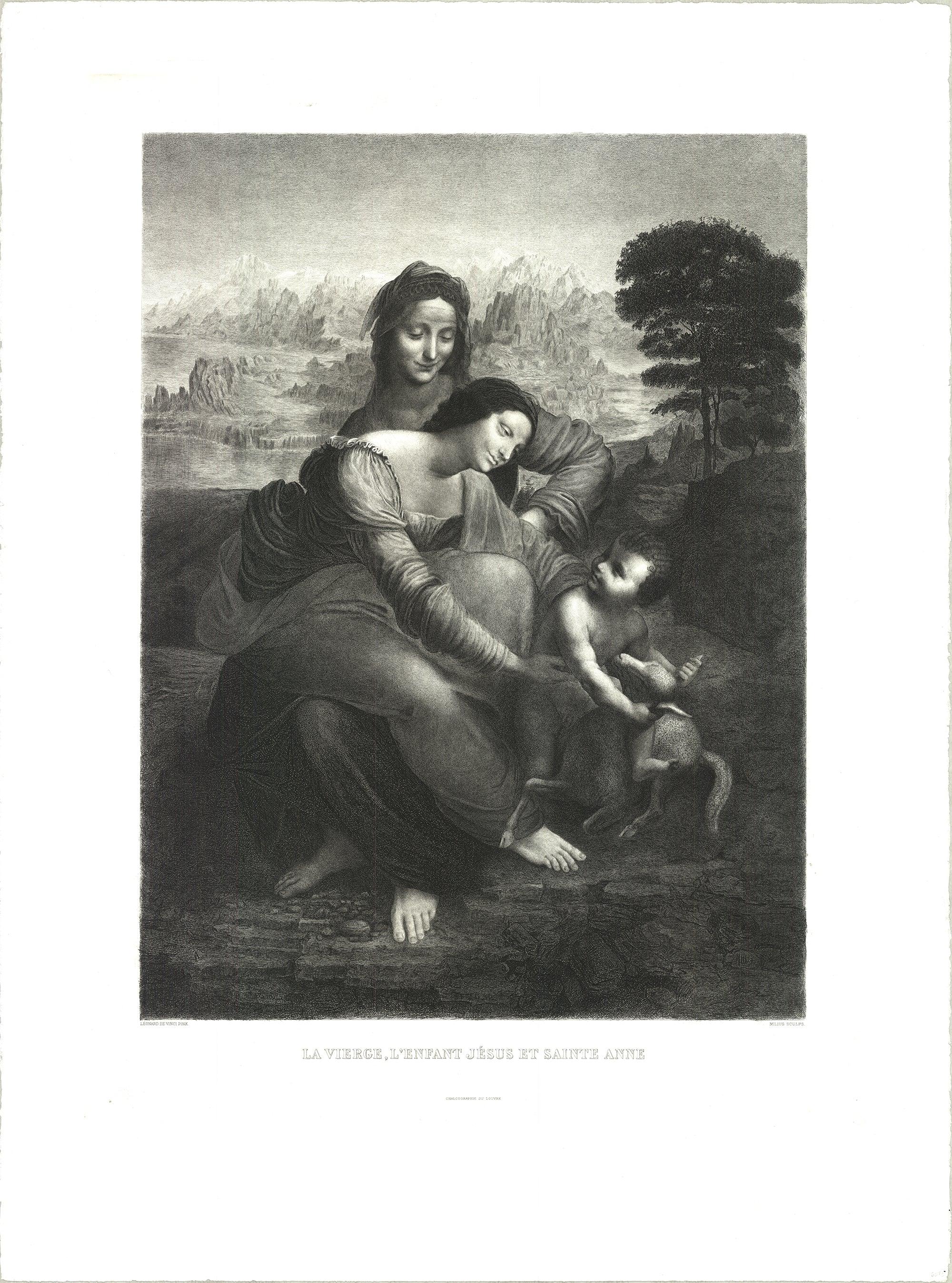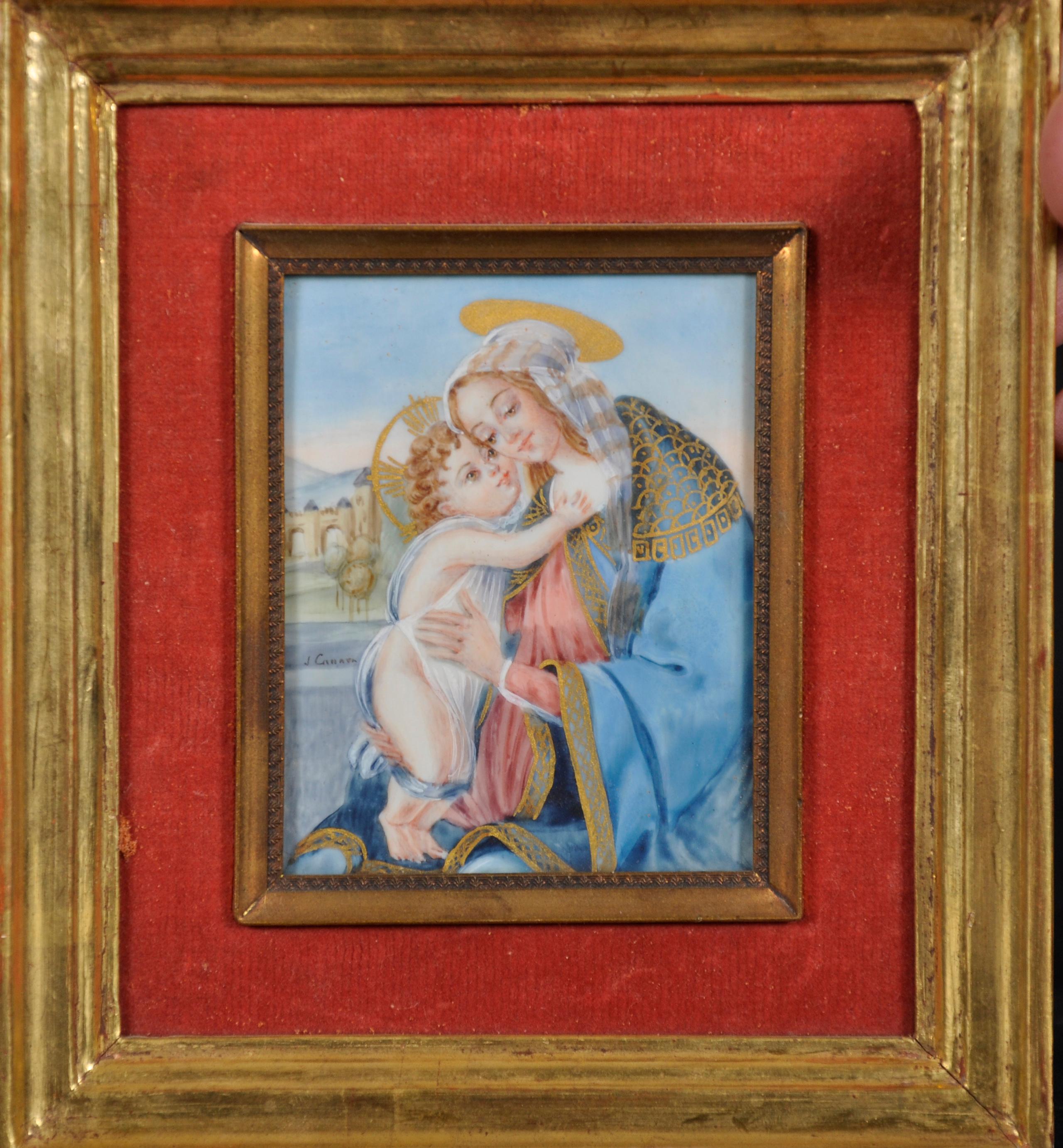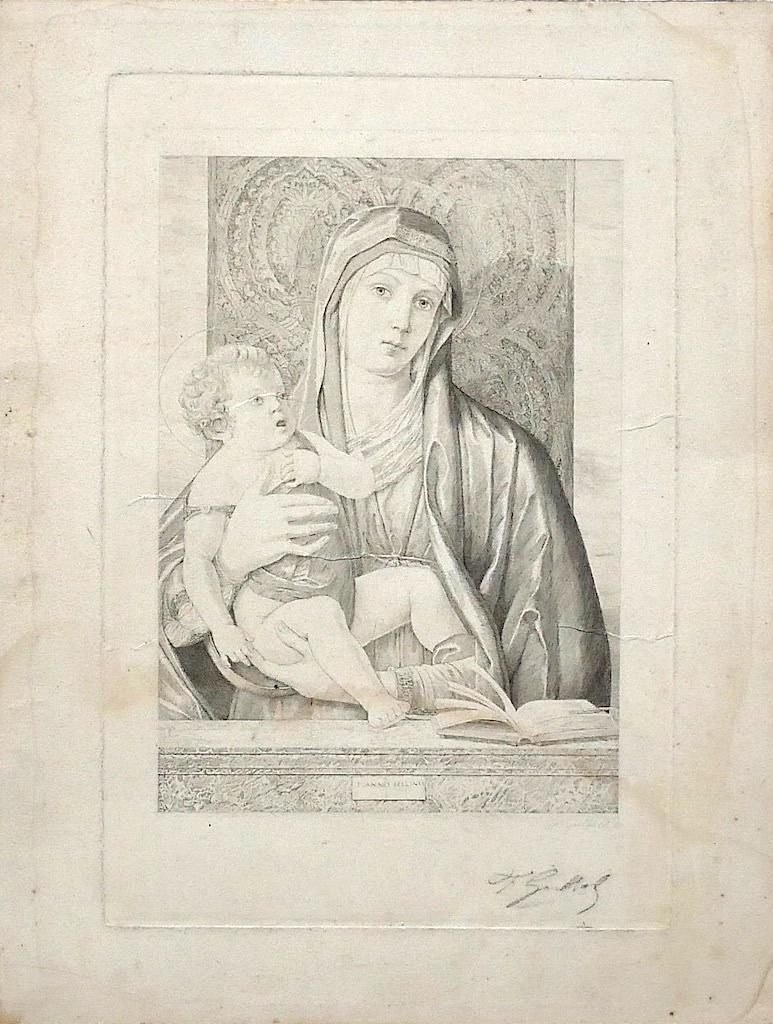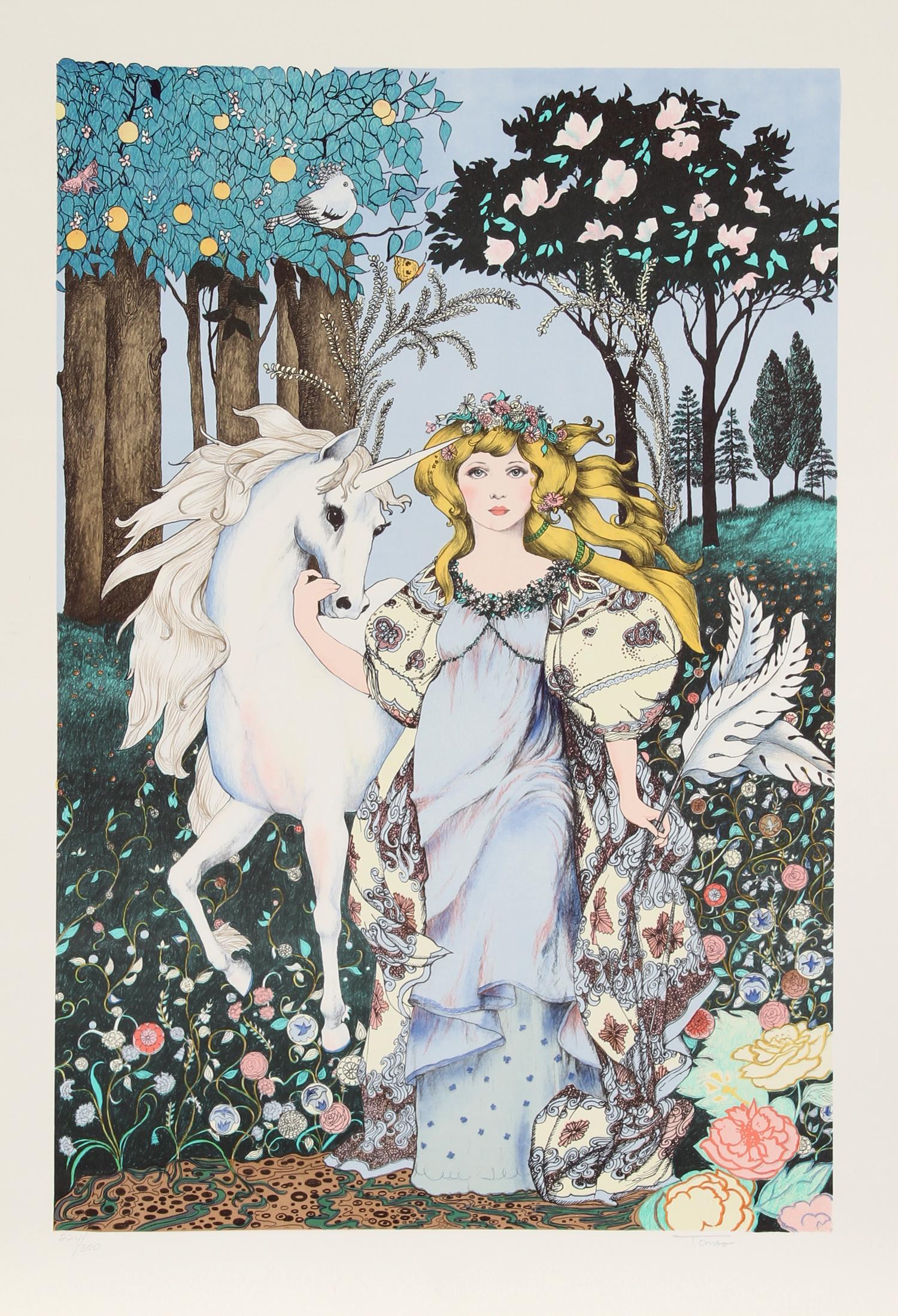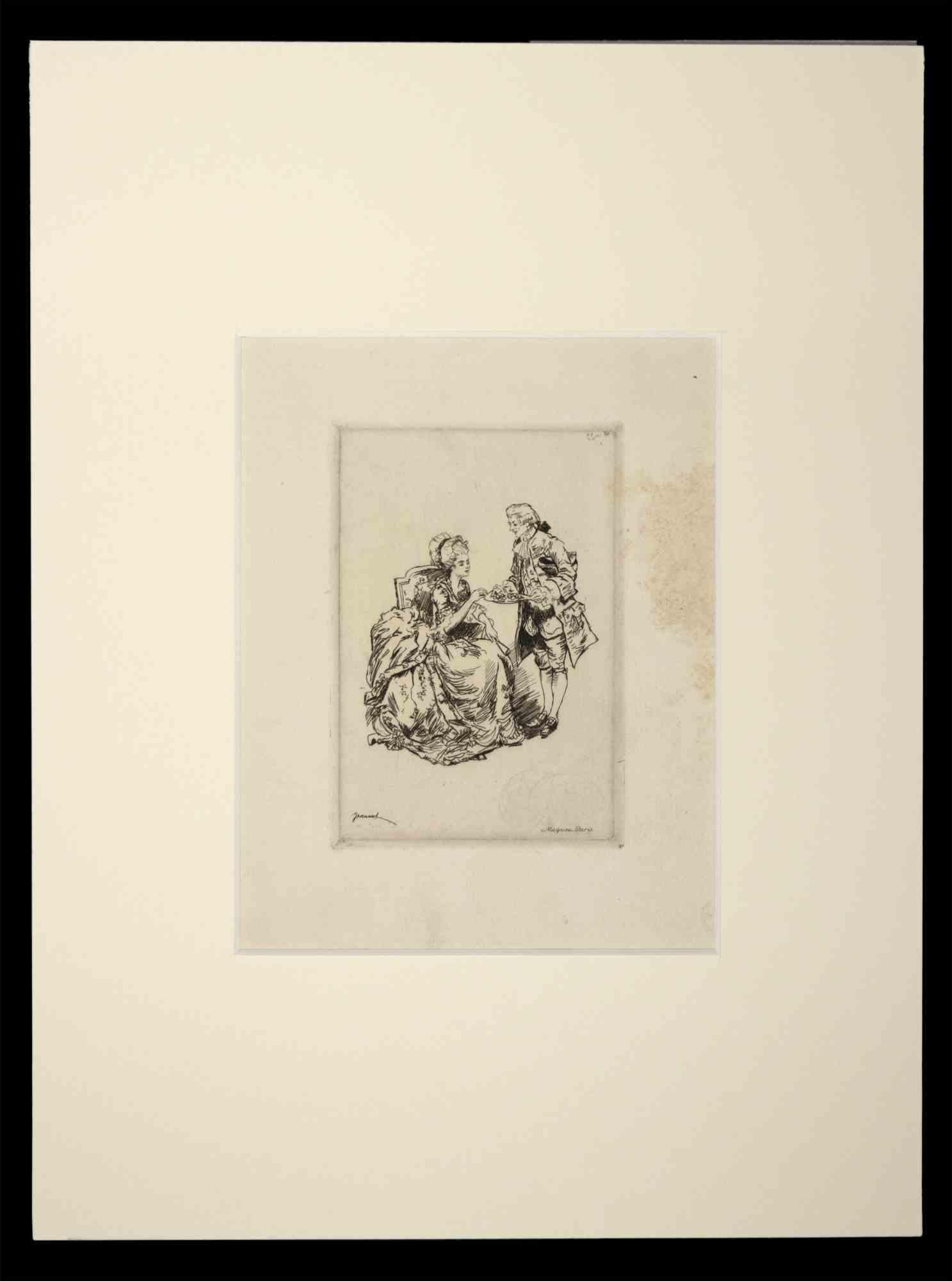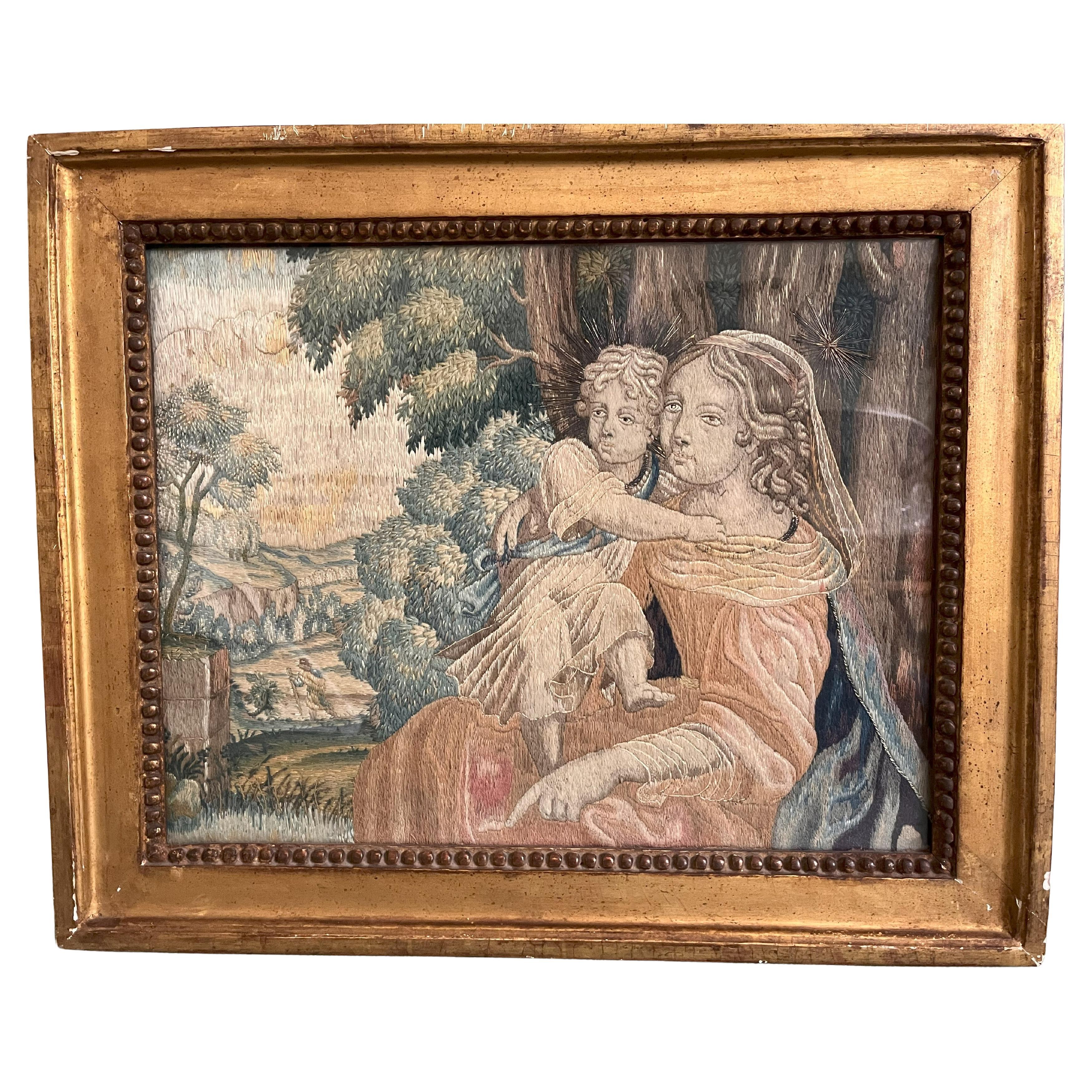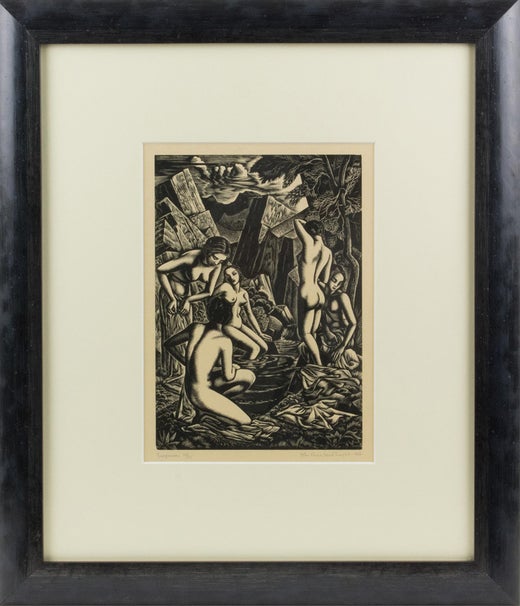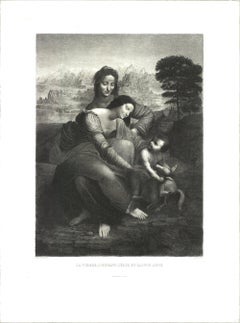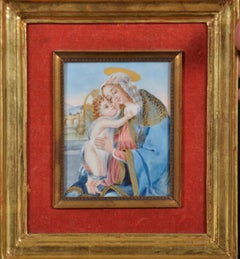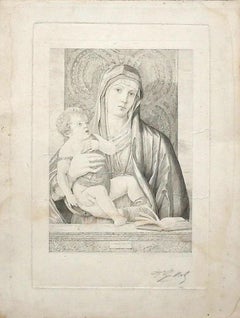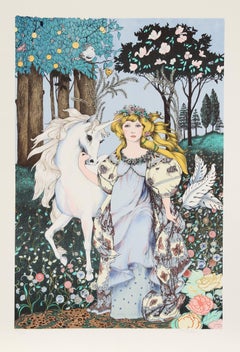Items Similar to The Virgin and the Unicorn
Want more images or videos?
Request additional images or videos from the seller
1 of 2
John Buckland-WrightThe Virgin and the Unicorn1947
1947
$9,000
£6,991.46
€7,932.89
CA$12,868.29
A$14,078.24
CHF 7,352.79
MX$168,238.38
NOK 92,377.84
SEK 86,942.14
DKK 59,241.57
About the Item
John Buckland Wright (1897-1954), The Virgin and the Unicorn (large version), wood engraving in colors, 1947, the original block and a proof, the proof titled, signed and dated lower margin. Reference: The Engravings of John Buckland Wright, edited and with an introduction by Christopher Buckland Wright, L 142. 6 1/16 x 4 1/16 inches, framed.
A fine impression of this great rarity, one of the three artist’s proofs (there was no edition), together with the block.
There was an earlier small version (Ld 155), which was rejected. The background on this print is described in Buckland Wright as follows: “Experimental prints using water or oil based inks, 3 artist’s proofs. Colour block printed in the same manner aqs for those in Andre Derain’s Pantagruel. The colours in the print are similar. JBW wold have been informed of the details for printing from his friend the printer Lacouriere who directed the printing for Pantagruel. This colour block and prints were prepared for the Arts Council (Great Britain).”
In the 1930’s, 1940’s and early 1950’s three artists did a great deal to launch British engraving into the exciting waters of contemporary European art: the New Zealander John Buckland Wright and two Englishmen William Hayter and Anthony Gross. They all had French attachments and were quite independent of the influences of earlier and highly successful schools of British engraving. Buckland Wright helped Hayter to found his famous Atelier 17 in Paris. At this workshop, in which artists experimented at novel methods of printmaking, JBW (as became known by his initials) worked with artists such as Matisse, Chagall, Picasso, Miró, Dali. Later when teaching at the Camberwell and Slade Schools of Art, he was able to communicate to his pupils his experience of how these artists worked.
JBW’s work is characterized by the portrayal of the sensuous nude, in which the female form is depicted with grace and charm. The source for his artistic expssion has its origin in his experiences during the First World War. Having joined the Scottish Ambulance Service, he was seconded to the French Army at Verdun, the sector in which the French suffered the greatest devastation during the First World War. There he witnessed harrowing scenes of human devastation while rescuing wounded and dying men from the front line trenches. Following the war, JBW found relief in drawing the female figure that incorporated the romantic ideal of Greek philosophy into the very essence of the emotional expssion of his work. Through his art he was able to come to terms with the horrors he had experienced during the war and to restore unity and tranquillity to the devastated landscapes, to repair the damage that war had wrought on his love of nature. Once more he would fill his world with beauty of a timeless quality he had experienced in the gardens and countryside of New Zealand and England. He found his emotional renewal through his art. It was in this way that he was able to expss his fundamental belief in the renewal of life and of the human spirit and to rediscover the joy he felt as a young man in nature’s soothing beauty. [from Christopher Buckland-Wright, introduction to the catalogue for the show Master of the Burin, the Book Illustrations of John Buckland Wright, 2006]
- Creator:John Buckland-Wright (1897 - 1954, English)
- Creation Year:1947
- Medium:
- Movement & Style:
- Period:
- Condition:To be sold as framed, including both the wood block and the wood cut.
- Gallery Location:New York, NY
- Reference Number:1stDibs: LU51531460933
John Buckland-Wright
Buckland Wright was born on December 3rd, 1897, in Dunedin, New Zealand. He moved to England in 1908. Buckland Wright studied history at Oxford and then architecture in London. He soon realized that he wanted to be an artist more than an architect and by 1921 he was living in Belgium and was elected a member of the Gravure Originale Belge in 1925. During the 1930s, Buckland Wright lived and worked in Paris. He had several one-man shows in London and throughout the continent. JBW is a signature that is commonly found in his work. His work is held by several museums in England: the Victoria and Albert Museum, the British Museum, the National Gallery of Art, the Museum of Modern Art, and many galleries and museums in Europe and America. A master printmaker with an assured, swirling line, Buckland Wright passed on his skills after World War II when he taught at Camberwell School of Arts and Crafts, from 1948, and the Slade School of Fine Art, from 1953, the year that his book Etching and Engraving: Techniques and the Modern Trend was published. He illustrated over 50 books.
Buckland Wright died on September 27th, 1954.
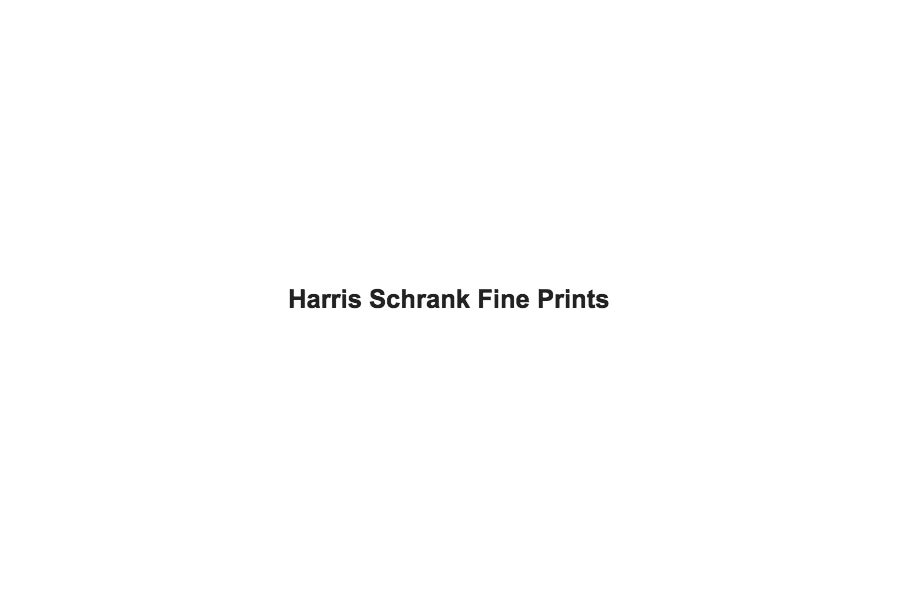
About the Seller
4.9
Recognized Seller
These prestigious sellers are industry leaders and represent the highest echelon for item quality and design.
Established in 2000
1stDibs seller since 2016
107 sales on 1stDibs
Typical response time: 6 hours
Associations
International Fine Print Dealers Association
- ShippingRetrieving quote...Shipping from: New York, NY
- Return Policy
More From This Seller
View AllVirgin and Child with the Pear
By Hans Sebald Beham
Located in New York, NY
Hans Sebald Beham (1500-1550), Virgin and Child with the Pear, engraving, 1520. Initials monogram and date in the plate. References: Bartsch 18, Pauli, Hollstein 19. First state (of two). In good condition, on old laid paper with thread margins on three sides, trimmed on the platemark bottom right and bottom, and archival mounting. h: 4.5 x w: 3 in / h: 11.4 x w: 7.6 cm
A very good impression of this rarity.
Hollstein indicates that earlier impressions, such as this one, do not have a scratch above the head of the Virgin.
Beham was one of the Northern Renaissance Little Masters, so called because of their eminence in producing small-scale engravings such as the Virgin and Child with a Pear. Beham was born in Nuremberg in 1500, and may have trained under Durer, though his training is no more certain than that of his younger brother Barthel. He made his first engraving in 1518, and later became known for producing woodcuts as well.
Beham’s Madonna with the Pear has a similar composition but in reverse to Durer’s engraving...
Category
16th Century Old Masters Figurative Prints
Materials
Engraving
La Fille aux Oies
By Jean-Emile Laboureur
Located in New York, NY
Jean-Emile Laboureur (1877-1943), La Fille aux Oies, engraving, 1916, signed in pencil lower left, numbered (4/40) lower right and inscribed “imp,” also titled lower left margin edge...
Category
1910s Cubist Figurative Prints
Materials
Engraving
Adoration of the Shepherds
By Peter Paul Rubens
Located in New York, NY
Adoration of the Shepherds after Peter Paul Rubens (Flemish, 1577-1640), engraved by Pierre-Franois Basan (French, 1723-1797), engraving, c. 1750, in black on ivory laid paper, 282 x 200 mm., with small margins. In very good condition.
A fine proof impression, before letters. A draft printing of letters is visible, lower left, below image: “P P Rubens inv.”; lower right: “F. Basan excudit”.
Basan’s engraving after Rubens may be modeled after another engraving of the Adoration after Rubens by Theodor Galle (1571-1633), which appeared as an illustration to the 1618 reprint of 1616 edition of “Missale Romanum...
Category
1750s Old Masters Figurative Prints
Materials
Engraving
Two Fools (or Fool and Foolish Woman)
By Hans Sebald Beham
Located in New York, NY
Hans Sebald Beham (1500-1550), an engraving after Beham’s Two Fools (or Fool and Foolish Woman), engraving, c 1540, a copy or impression in reverse of Pauli 215, Bartsch 213, the cop...
Category
16th Century Old Masters Figurative Prints
Materials
Engraving
Celestial Nymph I
By Elyse Ashe Lord
Located in New York, NY
Elyse Ashe Lord (1900-1971), Celestial Nymph I, c. 1930, color etching, soft ground, drypoint; signed lower right in pencil and numbered by the artist lower left. In very good condition, the full sheet, 8 1/4 x 10, the sheet 17 x 13 1/2 inches.
A fine impression, with strong color and plate tone on the nymph and surrounding decorations, and with pencil additions in various places on the nymph by the artist (using the same pencil as with signing). Printed on a light laid ivory Japan paper.
Provenance:
Kennedy Galleries, New York (with their stock number A 32064)
Elyse Ashe Lord developed her unique artistic style exclusively around oriental subject matter. Her art was inspired by both Chinese art and various aspects of oriental culture. Although E.A.Lord never actually travelled to China, she used Chinese paintings, embroideries and wall hangings, together with objects from surrounding Eastern countries, as the sources for her images. The highly individual style which Elyse Lord created reflects both this source material and the influences of Art Deco and early 1920’s fashion.
In particular, Elyse Lord is unusual in combining the technique of drypoint with woodcut colour printing. She uses the drypoint design almost as the Japanese would have used a key block in multiple block colour printing. The colours would then be added by over-printing the drypoint design using colour-inked wood blocks, precisely as displayed by this unique series of progressive proofs. Elyse Lord would always supervise the difficult process of printing her plates and blocks, in person. [I am indebted to Michael Campbell...
Category
1930s Other Art Style Figurative Prints
Materials
Drypoint, Etching
Mother Earth
By William Strang, R.A., R.E.
Located in New York, NY
William Strang (1859-1921), Mother Earth, 1897, etching, drypoint, aquatint ); signed in pencil lower right, and signed by the printer David Strang and...
Category
1890s Symbolist Figurative Prints
Materials
Drypoint, Etching, Aquatint
You May Also Like
La Vierge, l'Enfant Jesus et St. Anne
By Leonardo da Vinci
Located in Brooklyn, NY
This exquisite restrike etching of Leonardo da Vinci’s La Vierge, l'Enfant Jésus et Sainte Anne comes from La Calcographie du Louvre, the prestigious collection of engravings and rep...
Category
16th Century Renaissance Figurative Prints
Materials
Etching
19th Century Italian Miniature Painting The Madonna & Child, Signed original
By J. Canava
Located in Cirencester, Gloucestershire
The Madonna & Child
by J. Canava, Italian late 19th century
miniature painting on ceramic, framed within velvet inset and frame
image measures 3.2...
Category
Late 19th Century Renaissance Figurative Paintings
Materials
Gouache
Madonna and Child - Original Bulino by Ferdinand Gaillard - 19th Century
By Ferdinand Gaillard
Located in Roma, IT
Madonna and Child ( Vergine di Bellini) is an original print ( Bulino) realized in 1966 by Ferdinand Gaillard (1834-1887) in the 19th Century.
The artwork represents a beautiful po...
Category
19th Century Modern Portrait Prints
Materials
Engraving
Girl with Unicorn, Lithograph by Gina 'Jennie' Tomao Stephanopoulos
Located in Long Island City, NY
Girl with Unicorn
Gina ’Jennie’ Tomao Stephanopoulos, American (1934–2011)
Date: circa 1979
Lithograph, signed and numbered in pencil
Edition of 300
Image...
Category
1970s Figurative Prints
Materials
Lithograph
Scene from The Life of Casanova - Etching by G. Jeanniot - Early 20th Century
By Pierre Georges Jeanniot
Located in Roma, IT
Scene from The Life of Casanova is an original Etching realized by Pierre Georges Jeanniot in the early 20th Century.
Good Conditions.
The artwork is depicted through soft strokes ...
Category
Early 20th Century Modern Figurative Prints
Materials
Etching
19th Century Framed Embroidery - 'Mother and Child'
Located in Basildon, GB
19th Century Embroidery - 'Mother and Child' , framed and glazed, frame size 20" (51cm) x 16.5" (42cm) x 1.25" (3cm)
Category
Antique Late 19th Century Tapestries
Materials
Cotton
